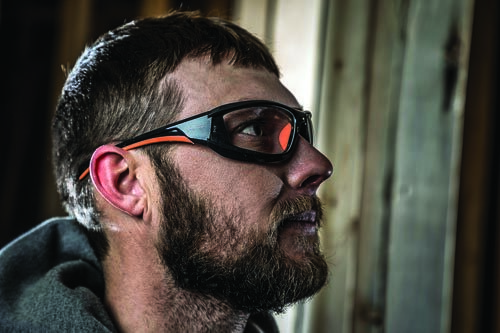Fogging issues with safety glasses
Why are my anti-fog safety glasses fogging?

Responding is Evan R. Hardin, director of sales – safety/personal protective equipment, Fastenal Co., Winona, MN.
The past three to five years have seen a rapid increase in anti-fog lens-coating technologies led by nearly every major eye protection manufacturer around the world. Specifically in North America, manufacturers are marketing their anti-fog technology as industry-leading and outperforming the competition. And it seems that all the major manufacturers now offer a “premium” anti-fog coating/material above and beyond the standard anti-fog coating of years past.
We know most definitely that not all anti-fog safety glasses are created equal. Here are a few basic concepts to help you understand the current anti-fog technologies and get the most out of your product investment.
A lot of factors go into selecting proper eye protection for your employees, as well as maintaining and cleaning the eyewear to keep the anti-fog working properly in an effort to maximize wear life. It’s important that users are properly trained on caring for the specific type of coating on the eyewear selected for them by their employer. For example, some anti-fog coatings are chemically engineered to absorb moisture droplets, acting like a microscopic sponge. Known as “hydrophilic” coatings, these do not wash off over time. Other coatings are applied topically to the lens. These types of coatings, known as “hydrophobic,” simply repel and spread moisture and are generally less effective for long-term use, even if they’re properly cared for.
When it comes to proper care of anti-fog treated lens materials, it’s important to understand how to clean and maintain the eyewear to maximize its wear life. It’s quite common for employees to take off the eyewear and wipe it off with a shirt, shop towel or something similar. Not only does this minimize the life of the coating, but it also can introduce debris and contaminants to the lens. Either the coating gets wiped off or the lens material gets scratched – or both occur simultaneously. Many lens cleaning products (prepackaged wipes, sprays, etc.) are available to help maximize the life of the eyewear. Many of these are designed to reapply the anti-fog coating to the glasses while they’re being cleaned.
Certain situations, such as excessive sweating, definitely call for selecting premium anti-fog safety glasses. Until ANSI/ISEA creates uniform testing standards and guidelines for anti-fog eyewear, take the extra step to understand the type of anti-fog eye protection you’re providing to your employees and educate them on how to properly care for them.
Editor's note: This article represents the independent views of the author and should not be construed as a National Safety Council endorsement.
Post a comment to this article
Safety+Health welcomes comments that promote respectful dialogue. Please stay on topic. Comments that contain personal attacks, profanity or abusive language – or those aggressively promoting products or services – will be removed. We reserve the right to determine which comments violate our comment policy. (Anonymous comments are welcome; merely skip the “name” field in the comment box. An email address is required but will not be included with your comment.)

